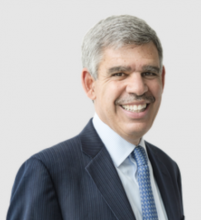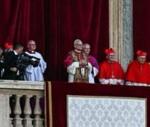You are here
The Fed's historic error
Mar 01,2022 - Last updated at Mar 01,2022
CAMBRIDGE — A close friend who has been incredibly successful in his tech career once observed that an initial suboptimal decision is likely to lead to a series of subsequent bad decisions. Economists call this “multiple equilibria”. And the US Federal Reserve (Fed), the world’s most influential monetary institution, finds itself in the midst of such a situation regarding inflation, with implications that extend well beyond US economics and finance.
The initial phase of the Fed’s ongoing inflation mistake, an error that will likely be remembered as one of its biggest ever, started with last year’s protracted mischaracterisation and dismissal of price increases as “transitory”. Although evidence of persistently high inflation dynamics was increasingly visible, the Fed repeatedly dismissed these signs, failing, most notably, to heed the warnings expressed by firms on one earnings call after another.
It is not entirely clear what was behind the Fed’s initial misstep on inflation. What remains baffling is that, for most of 2021, policymakers seemed eager to double down on their “transitory” claim, rather than show humility as their inflation forecasts were revealled to be repeatedly and spectacularly wrong.
Even today, officials are hindering the restoration of the Fed’s badly damaged credibility by not explaining why they made this protracted mistake. I suspect the reason involves some combination of cognitive capture, loss of focus, unwillingness to admit error, and reluctance to abandon a “new monetary framework” that quickly became outdated and counterproductive.
It was not until the end of November 2021 that Fed Chair Jerome Powell, finally and belatedly, declared it was time to “retire” the word “transitory”. But then came the second stage of the Fed’s multifaceted blunder. The policy adjustments that followed Powell’s statement were extremely modest, with the Fed announcing only that its large-scale asset-purchase programme, known as quantitative easing (QE), would be wound down entirely by March 2022.
That was the time for the Fed to do two things to restore its inflation credentials and retain adequate control of its policy narrative. First, it should have explained why it messed up its inflation call so badly and how it had adjusted its forecasting models to be less wrong in future. Second, the Fed should have taken significant initial policy steps and provided guidance about what would follow.
Having failed to do either, the Fed then entered the third stage of its historic mistake by losing control of the policy narrative just as inflation readings were getting worse.
Nothing highlighted better the big hole that the Fed had dug itself than the fact that, as late as February 2022, it was continuing its QE liquidity injections, even though inflation was running at 7.5 per cent , a 40-year high. Astoundingly, and despite calls to act, the Fed had rejected an immediate halt to QE at both its December and January policy meetings.
All of which brings us to today. Inflation readings continue to surprise on the upside and Russia’s invasion of Ukraine will increase the risk of a stagflationary shock. Meanwhile, Fed officials have offered different views publicly regarding how the central bank should approach both interest-rate hikes and reducing its bloated $9 trillion balance sheet.
Lacking any proper guidance from the Fed, the market rushed to price 7-8 rate hikes in 2022 alone. Some Wall Street analysts went as far as ten, including a 50-basis-point hike as soon as the Fed’s mid-March meeting. Others urged the Fed to implement an emergency intra-meeting rate increase.
The Fed’s suboptimal decisions over the past 12 months mean that its next policy decision also is likely to be suboptimal. Even if it had a good feel for the current “first best” policy response, the Fed is unlikely to be able to implement it, given how far policymakers have fallen behind economic realities. To paraphrase the old Irish joke, you can’t get to a first-best policy starting from here.
Rather than being able to deliver a smooth landing for the US economy, the Fed must now judge what constitutes the least harmful alternative. Such a choice is like being forced to select an already dirty shirt because no clean ones are available anymore. And that is not a good look.
Mohamed A. El-Erian, president of Queens’ College at the University of Cambridge, is a professor at the Wharton School of the University of Pennsylvania and the author of “The Only Game in Town: Central Banks, Instability and Avoiding the Next Collapse” (Random House, 2016). Copyright: Project Syndicate, 2022 www.project-syndicate.org













